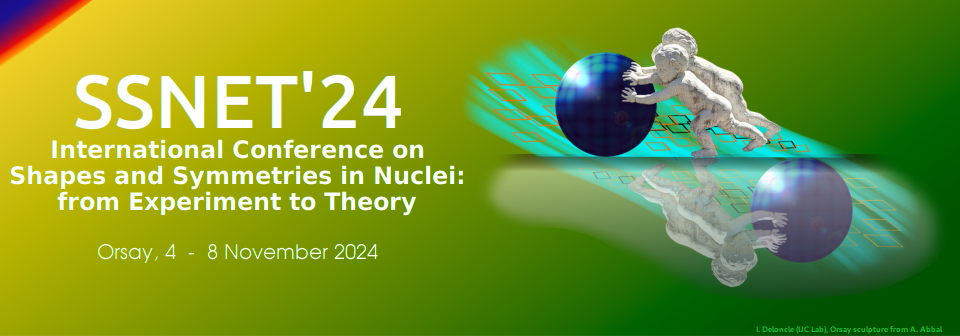Orateur
Description
Observations of spectroscopic properties in some nuclei suggest the existence of shape fluctuations and shape coexistence phenomena. To describe such phenomena, it is obvious that a mean-field approach, which treats small-amplitude dynamics around a single-reference state, is not enough, and a beyond-mean-field approach is necessary. The five-dimensional quadrupole collective Hamiltonian method, which describes large-amplitude collective dynamics in the $\beta$--$\gamma$ deformation space, has been often employed. Recently, we have developed the local QRPA with the Skyrme EDF to evaluate the collective inertial functions at any triaxial shapes in the $\beta$--$\gamma$ plane in the collective Hamiltonian method [1].
In this talk, we will show the results of low-lying states obtained using the collective Hamiltonian method for neutron-rich Cr isotopes and $N=40$ isotones, where recent advances in experiments have started providing much spectroscopic information. The improved inertial functions give better reproduction of the excitation energies of the experimental low-lying levels. In particular, the low-lying excited $0^+$ states are considerably affected by the improved inertial functions using the local QRPA in these neutron-rich nuclei.
[1] K. Washiyama, N. Hinohara, and T. Nakatsukasa, Phys. Rev. C 109, L051301 (2024).

